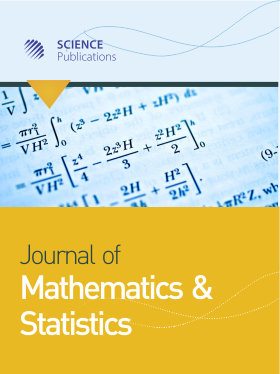Application of Markov Chains to Stock Trends
Abstract
Problem statement: Modeling of the Dow Jones Industrial Average is frequently attempted in order to determine trading strategies with maximum payoff. Changes in the DJIA are important since movements may affect both individuals and corporations profoundly. Previous work showed that modeling a market as a random walk was valid and that a market may be viewed as having the Markov property. Approach: The aim of this research was to determine the relationship between a diverse portfolio of stocks and the market as a whole. To that end, the DJIA was analyzed using a discrete time stochastic model, namely a Markov Chain. Two models were highlighted, where the DJIA was considered as being in a state of (1) gain or loss and (2) small, moderate, or large gain or loss. A portfolio of five stocks was then considered and two models of the portfolio much the same as those for the DJIA. These models were used to obtain transitional probabilities and steady state probabilities. Results: Our results indicated that the portfolio behaved similarly to the entire DJIA, both in the simple model and the partitioned model. Conclusion: When treated as a Markov process, the entire market was useful in gauging how a diverse portfolio of stocks might behave. Future work may include different classifications of states to refine the transition matrices.
DOI: https://doi.org/10.3844/jmssp.2011.103.106

- 6,957 Views
- 9,925 Downloads
- 24 Citations
Download
Keywords
- Markov chains
- stock trends
- Dow Jones Industrial Average (DJIA)
- steady state
- finite number
- Microsoft Excel
- transitional state
